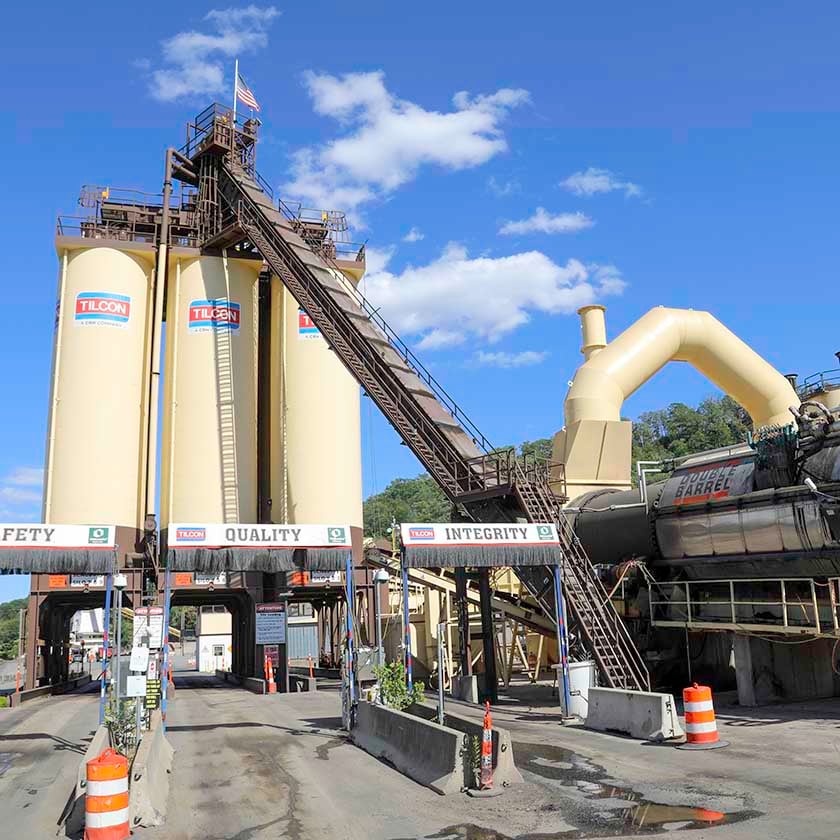Reimagine Your Area: Hot Mix Asphalt Paving for Angled Parking Lot Tasks
Reimagine Your Area: Hot Mix Asphalt Paving for Angled Parking Lot Tasks
Blog Article
Unlocking the Tricks of Hot Mix Asphalt Innovation
Checking out the midsts of hot mix asphalt modern technology discovers a world where precise formulas and meticulous procedures merge to shape our roadways and framework. The fusion of fillers, binders, and aggregates isn't merely a building and construction task yet a calculated orchestration of longevity and effectiveness.
Value of Hot Mix Asphalt
Warm Mix Asphalt plays a vital duty in modern infrastructure development because of its longevity and cost-effectiveness. As one of the most commonly made use of paving material for roads, highways, and parking lots, Hot Mix Asphalt supplies a series of advantages that add to its value in building jobs. One crucial advantage is its capacity to hold up against hefty website traffic tons and extreme climate condition, supplying a dependable and long-lasting surface area for transportation networks. Furthermore, Hot Mix Asphalt is economical in both first construction and lasting maintenance, making it a recommended selection for several facilities jobs.
The longevity of Hot Mix Asphalt stems from its make-up, which includes accumulations, binder, and filler products that are thoroughly chosen and blended to meet particular performance requirements. Overall, the relevance of Hot Mix Asphalt in facilities advancement can not be underrated, as it continues to be a keystone of modern-day building methods.
Components of Asphalt Mixes
The composition of asphalt mixes is composed of carefully selected aggregates, binder, and filler products that are essential for attaining details efficiency needs. Accumulations are the key element of asphalt mixes, supplying strength and stability. The binder, normally asphalt or asphalt cement, holds the accumulations together and gives adaptability and sturdiness to the mix.
The combination and proportion of these components play a considerable role in establishing the quality and efficiency of the asphalt mix. Designers meticulously develop the mix to satisfy details requirements, thinking about aspects like traffic quantity, environment problems, and pavement life-span. Proper choice and balancing of accumulations, binder, and fillers are essential for developing long lasting, lasting asphalt pavements.
Combining and Production Methods

When the accumulations are chosen, the binder, typically asphalt cement, is contributed to bind the products with each other. The binder's high quality and amount significantly affect the mix's adaptability, resistance, and strength to ecological aspects. Furthermore, fillers like hydrated lime or Portland cement may be included to boost details characteristics of the asphalt mix, such i was reading this as its workability or moisture resistance.
During manufacturing, the accumulations and binder are heated up, typically between 250-325 ° F(121-163 ° C ), to help with blending and make certain proper finish of the accumulations. The mixing process should be comprehensive to accomplish a homogeneous mix that advertises the desired performance features of the asphalt. Various strategies, such as set blending or drum blending, are used to attain high-grade and constant asphalt blends for building tasks.
Factors Influencing Asphalt Efficiency
Factors affecting asphalt performance encompass a range of variables that impact the durability, longevity, and general high quality of asphalt pavements. One essential factor is the quality of products made use of in the asphalt mix.

Environmental conditions likewise influence asphalt efficiency. Temperature level variants, dampness seepage, and website traffic lots can all impact the structural stability of the pavement. Design considerations, such as sidewalk thickness and Full Report water drainage, are necessary in making certain the long-term efficiency of the asphalt pavement. By thoroughly thinking about these professionals, engineers and factors can maximize asphalt efficiency and improve the life span of sidewalks.
Lasting Practices in Asphalt Innovation

WMA permits for the production and positioning of asphalt mixes at reduced temperatures contrasted to typical hot-mix asphalt, resulting in minimized energy usage and greenhouse gas exhausts. The usage of permeable asphalt blends can aid minimize stormwater runoff issues by enabling water to penetrate through the sidewalk and into the ground, promoting all-natural water filtering and charge procedures.
Conclusion
To conclude, hot mix asphalt technology plays an important duty in contemporary framework advancement as a result of its longevity and cost-effectiveness. By carefully stabilizing components, employing correct mixing methods, and taking into consideration different aspects, engineers can create high-grade asphalt blends that stand up to rush hour lots and severe weather. Welcoming lasting methods, such as making use of warm-mix technologies and recycled products, better boosts the ecological kindness of asphalt modern technology.
Mixing and check that production techniques in warm mix asphalt modern technology involve the exact combination and processing of accumulations, binder, and fillers to develop a resilient and high-performance asphalt mix.Variables affecting asphalt efficiency include a range of variables that impact the durability, longevity, and overall quality of asphalt sidewalks. Sustainable techniques in asphalt technology include different initiatives intended at decreasing the environmental effect of asphalt production and paving procedures. By integrating recovered asphalt pavement (RAP) and recycled asphalt roof shingles (RAS) into brand-new asphalt mixes, the market can dramatically reduce the intake of raw materials and energy, while also lowering land fill waste.
WMA allows for the production and placement of asphalt blends at reduced temperature levels contrasted to typical hot-mix asphalt, resulting in reduced power intake and greenhouse gas exhausts.
Report this page